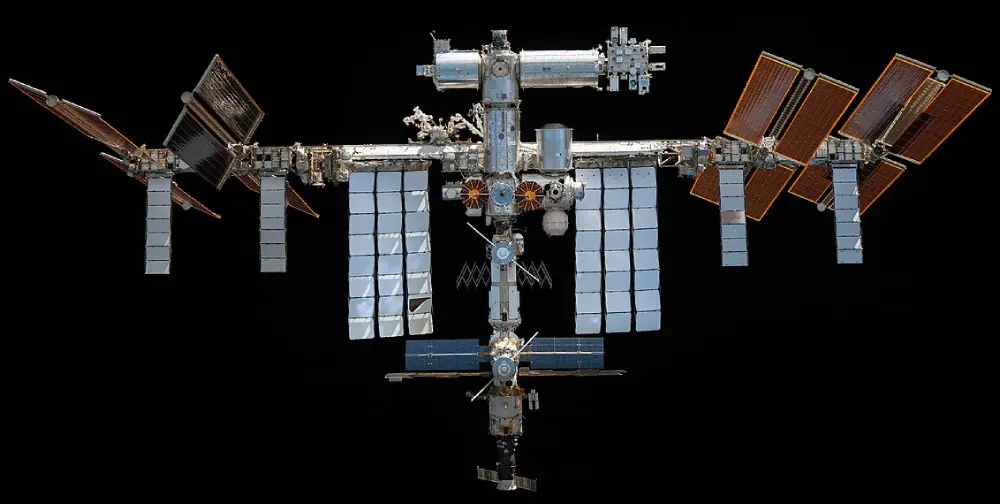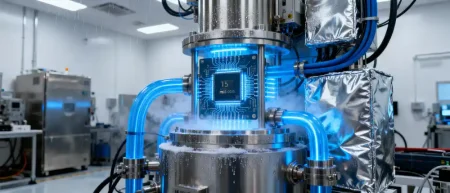As Earth’s power and cooling abilities reach their limits, tech giants are eyeing orbital and lunar server farms.
Data traffic on Earth isn’t just growing, it’s ballooning, and the servers keeping it all running are guzzling power, draining water, and testing the patience of local communities. Add in rising climate risks, and the hunt for alternatives starts looking urgent.
While we posted about the first underwater data centre in April this year, one answer, oddly enough, might be sitting well above our heads. Florida-based Lonestar Data Holdings is already working on what could be the first actual data center on the Moon, pitched as a secure off-world vault for critical information. And in spring 2025, Axiom Space and Red Hat will trial their Orbital Data Center Unit-1 (AxDCU-1) on the ISS, a compact prototype built for AI crunching, cloud workloads, and space-grade cybersecurity. The draw? Space offers solar energy in abundance, natural cooling in the vacuum, and a strategic perch for global coverage.
Now comes the hard part: turning a few bold demos into infrastructure you can bet the internet on.
Lonestar’s Lunar Leap

Lonestar Data Holdings is making history with the Freedom Data Center, slated to become the first physical data center deployed on the Moon. Reported by Reuters, the company has partnered with Intuitive Machines to send a fully assembled, solar-powered storage hub aboard a SpaceX Falcon 9 via the Athena lander. The initiative aims to offer robust, off-Earth disaster recovery and archival services, particularly for governments and enterprises.
This system uses solid-state drives and is designed to operate in extreme conditions, offering redundancy far from fragile terrestrial networks. Clients already lined up include the State of Florida, the Isle of Man government, AI firm Valkyrie, and popular rock band Imagine Dragons! This project is about preserving critical data in a location isolated from earthly threats, whether environmental, geopolitical, or cyber.
Lonestar’s project builds on earlier milestones. In 2021–2022, it successfully ran a software-defined data center aboard the International Space Station, proving that off-world data storage and retrieval can work in practice. The “Freedom” payload (a shoebox size, 3D-printed data-center with 8TB of data), now on its way to the Moon, has already cleared several commercial and technical checkpoints.
The company pitches the lunar surface as a kind of high-security vault: solar panels for power, extreme cold to reduce cooling needs, and physical distance from Earth’s cyber and weather threats. That doesn’t mean the Moon is hazard-free; radiation, micrometeoroids, and the sheer difficulty of maintenance remain major obstacles.
Rocket launches are expensive, and there’s no room for trial-and-error once hardware is in place. Even so, as Earth’s networks grow more vulnerable, the case for a lunar backup system is getting louder, and Lonestar seems determined to be the first to make it happen.
Axiom Space’s ISS Prototype

A parallel effort is also unfolding above us. Axiom Space, working with Red Hat, is set to send its first prototype data center, the AxDCU-1, to the International Space Station in spring 2025. The unit will run Red Hat’s Device Edge platform, which bundles MicroShift, Red Hat Enterprise Linux, and Ansible, and it’s being used to test how well advanced AI, machine learning, cloud processing, and space-hardened cybersecurity can work off-planet.
The big idea is to handle data closer to where satellites collect it, cutting delays and making systems harder to disrupt. It’s also a trial run for something bigger: commercial orbital data hubs and, eventually, Axiom’s own low-Earth orbit station. If AxDCU-1 performs well, it could end up as the starting point for a whole network of “edge in space” computing nodes.
The AxDCU-1 project stands out because it takes enterprise-class computing and tests it in the unforgiving conditions of space. By using Red Hat’s Device Edge platform, it maintains a familiar cloud-native framework, with Kubernetes tailored for small, efficient edge setups. The mission will show whether technology built for Earth’s data centers can keep running, and running well, in orbit, where microgravity, radiation, and extreme temperature swings are the norm.
If successful, it would enable a new class of infrastructure, one that supports real-time autonomy for spacecraft, government missions, and commercial satellites. It represents a critical milestone on the path to Axiom’s own commercial station, intended to serve industries from Earth observation to AI. While not as visually dramatic as placing a data center on the Moon, orbiting compute may prove more scalable, accessible, and strategically useful in the near term.
The Final Frontier
What once sounded like sci-fi is edging into reality. We’re now talking seriously about data hubs on the Moon and in orbit, not as concepts, but as projects with launch dates. Lonestar’s Freedom payload is essentially a vault under lunar insulation; Axiom’s AxDCU-1 is more of an orbital workstation, staying close to satellites and built for quick relay.
They couldn’t be more different in execution, yet they share a simple goal: keep information safe when Earth isn’t a sure bet. Solar power and the vacuum do some of the heavy lifting, but cost, upkeep, and regulations still loom large. And yes, the lag for ground users will be a factor. Even so, if climate shocks, politics, or plain old infrastructure trouble threaten our data, space stops being a novelty and starts looking like insurance, the kind you hope you never need, but might be glad exists.
In case you missed:
- China launches world’s first AI-powered underwater data centre!
- India’s First Paid Chip Prototype: Kaynes Fires the Starting Shot
- One Chip to Rule Them All: The 6G Chip at 100 Gbps!
- India, iPhones, China & Trump: The Foxconn Story!
- India Brings AI to Its Aatmanirbhar Weather Forecasting
- India’s Mappls Revolution: The Swadeshi Push to Dethrone Google Maps
- India’s first Aatmanirbhar semiconductor chip is finally here!
- New Study Proves Gold Grows on Trees: What it means and why India should pay attention!
- Quantum War Tech: DRDO and IIT help India take the lead!
- India’s Starlink Moment is Finally Here: Green Light from The Government!










